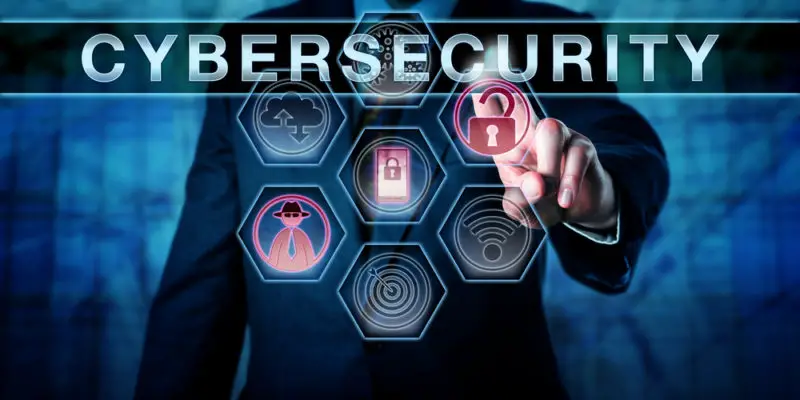Understanding risk indicators and mechanisms for managing them is crucial due to the rapidly increasing cybersecurity threats and resulting business risks.
This document aims to delve into the intricacies of the National Institute of Standards and Technology (NIST) Cybersecurity Framework, a guiding path that enables organizations to manage and mitigate these risks effectively.
Beginning with an overview of the Framework’s origins, core elements, and widespread adoption, we will embark on a journey into the identification, protection, detection, response, and recovery process.
Subsequent sections focus on decomposing the key cybersecurity risk indicators within the framework, connecting these risks to their corresponding controls, and ultimately applying these principles and practices within real-world scenarios.
Understanding the NIST Cybersecurity Framework
The NIST Cybersecurity Framework: Foundations for Mastery
In the cyber protection and assurance world, the National Institute of Standards and Technology (NIST) Cybersecurity Framework occupies an eminent position.
This framework has become an authoritative guideline for organizations aiming to protect their digital assets and fortify their systems against a volatile landscape of cyber threats.
However, comprehending and efficiently implementing the NIST Cybersecurity Framework necessitates underpinning specific knowledge domains. Here we explore these foundational elements.
Firstly, an in-depth understanding of the broader field of cybersecurity is indispensable. Cybersecurity, as a discipline, revolves around protecting internet-connected systems — including hardware, software, and data — from cyber threats.
One must be familiar with essential concepts such as threat modeling, risk assessment, encryption, authentication, incident response, and recovery protocols to fully grasp the NIST Cybersecurity Framework’s context.
Secondly, intimate familiarity with the principles and practices of risk management is crucial. The NIST Cybersecurity Framework is underpinned largely by risk management processes; it provides a structured methodology for identifying, assessing, and prioritizing risks related to digital assets.
Therefore, knowledge and understanding of risk identification, assessment techniques, risk prioritization, and strategies to mitigate risk are essential.
Thirdly, mastery of information technology (IT) and its various aspects are imperative. As the NIST framework thoroughly interacts with IT infrastructure to buttress data integrity, confidentiality, and availability, a solid grounding in IT is mandatory.
This would include areas such as networks, databases, hardware, and software and how they interface with business processes and objectives.
Knowledge of the legal aspects of digital data, privacy, and cybersecurity regulations also plays a significant role in understanding this framework.
This aids in the comprehension of legal responsibilities in relation to data breaches, data protection, and the implementation of cybersecurity measures.
Familiarity with laws such as the Computer Fraud and Abuse Act (CFAA), the Health Insurance Portability and Accountability Act (HIPAA), and the General Data Protection Regulation (GDPR) is exceedingly beneficial.
Finally, the underpinnings of corporate governance and its function in managing digital assets are necessary. Proficiency in this area ensures one can navigate the responsibilities and accountabilities of stakeholders while strategizing and implementing effective cybersecurity policies and measures.
Dissecting and digesting the NIST Cybersecurity Framework necessitates a proper grounding in the elements of cybersecurity, risk management, information technology, relevant legal considerations, and corporate governance.
Nurturing expertise in these areas will substantially aid in navigating the intricacies of the NIST Cybersecurity Framework, fostering a potent environment for protecting an organization’s valuable digital assets.

Decomposing Key Cybersecurity Risk Indicators
Key Cybersecurity Risks and Their Identification within the NIST Framework Scope
Understanding, cataloging, and mitigating threats require a meticulous framework within the labyrinthine domain of cybersecurity. One such established framework is the National Institute of Standards and Technology (NIST) Framework.
This set of voluntary standards, best practices, and recommendations aids organizations in managing cybersecurity risks.
A central step in the NIST Framework is the identification of potential cybersecurity risks. These risks encompass many categories, such as insider threats, unpatched vulnerabilities, malicious codes, denial-of-service attacks, and data leakage.
Intentional and unintentional insider threats are frequently overlooked yet crucial points of scrutiny. These are initiated by individuals with authorized access to information systems, often leading to misuse or unauthorized disclosures.
Detection of such threats necessitates rigorous user behavior tracking and anomaly-based intrusion detection systems.
Unpatched vulnerabilities and loopholes in applications or systems provide gateways for cybercriminals to infiltrate a network.
These lids to Pandora’s boxes can be identified through regular vulnerability assessments, supplemented by rigorous patch management processes.
Malicious codes, encompassing viruses, worms, trojans, ransomware, etc., continue to evolve and pose considerable threats. Their detection requires updated antivirus measures and infection vector assessment.
Denial-of-Service (DoS) attacks and their distributed counterparts (DDoS) aim to render systems unavailable, often leading to significant service disruptions and financial losses. Identifying these risks involves monitoring system performance and network traffic patterns.
Finally, data leakage, the intentional or unintentional export of data from within an organization to an external destination, perpetually looms over data integrity.
This necessitates a comprehensive data loss prevention strategy incorporating encryption, access controls, and rigorous auditing of data movement.
Moreover, the NIST Framework underscores the importance of tailoring the risk identification process to the organization’s specific objectives, industry sector, risk tolerance, and resources.
Adopting a systemic approach to risk identification, where each risk is examined in relation to the entire risk landscape, aids in the overall prioritization of risk mitigation actions.
An optimal approach could involve consistent monitoring of the threat landscape to ensure up-to-date risk identification.
Here, intelligence gathering – both in terms of cyber threat intelligence and open-source intelligence – would substantially bolster the detection of emergent risks.
In addition, the NIST Framework also advocates for involving a broad cross-section of organizational stakeholders in risk identification. This collaborative approach can help ensure a holistic view and address any potential blind spots.
The sphere of cybersecurity is ever-evolving with rising complexities and intricacies. However, diligent application of a robust framework such as the NIST Framework could aid in effectively identifying and managing the multitude of cybersecurity risks hiding in the shadowy corners of our increasingly connected world.

Connecting Risks to Cybersecurity Controls
Delving further into the intricate complexity of cybersecurity and the NIST Framework, it is pivotal to comprehend how its control mechanisms correlate with potential cybersecurity risks.
Each facet of the Framework is conscientiously and purposefully constructed to counter distinct threats, driving a harmonious co-relation significant in understanding its comprehensive application.
Existing within the realm of cybersecurity risk management are Advanced Persistent Threats (APTs). These are often state-sponsored or carried out by highly sophisticated cyber criminals.
APTs focus on infiltrating specific organizations, making them a primary concern for institutions with sensitive data. The NIST Framework’s detection and response controls are powerful countermeasures against APTs by incorporating threat-hunting techniques and incident management procedures.
Phishing attacks, a commonly known cybersecurity risk, exploit human error as their entry point, using malicious email links or attachments.
To mitigate these risks, the NIST Framework espouses a potent blend of protection controls, including awareness and training programs, ensuring a holistically informed organization is less prone to such manipulations.
Supply chain risks that stem from third-party vendors are another significant concern in the spectrum of cybersecurity threats.
Such risks materialize when hackers target less secure contractors to access an organization’s network. NIST tackles supply chain risks by advocating for third-party risk management and rigorous oversight of service providers.
Another threat looming in the cyber realm is ‘Zero-day’ attacks. These infiltrate systems through unknown vulnerabilities before developers can create patches.
The NIST Framework advises continuous system and network monitoring, alongside anomaly detection measures, to detect these threats promptly.
Lastly, the realm of IoT presents its unique set of risks, as the internet-connected devices increase the attack surface for potential breaches.
Proactive device management and secure configurations are essential facets of the NIST Framework’s proactive approach to curbing these threats.
Recognizing the kaleidoscopic nature of cybersecurity risks and how they are intimately tied to the NIST Framework’s controls points to the importance of strategic risk management.
Implementing the NIST Framework is indeed far from a cure-all solution, but it is unarguably a comprehensive, intelligently designed measure that takes a significant step towards mitigating a complex realm of risks.

Practical Application of the NIST Cybersecurity Framework
The National Institute of Standards and Technology (NIST) Cybersecurity Framework has demonstrated its practical worth in effectively addressing many cyber threats.
One of such utilities is dealing with advanced persistent threats (APTs). APTs are long-term targeted attacks where hackers infiltrate a system stealthily to pilfer data.
Implementing the detect and respond functions of the NIST Framework can help organizations improve their ability to counteract Advanced Persistent Threats (APTs).
This is evidenced in a high-profile case where a financial institution nullified an APT by using the framework to reinforce their intrusion detection and response measures, which ultimately led to prompt identification and resolution of the security breach.
Another vexing digital security issue is phishing attacks. These attacks exploit human psychology to trick individuals into providing sensitive data.
The NIST Framework’s education and awareness-building measures arm employees with the necessary skills for identifying phishing attempts, reducing the success rates of such attacks.
A study conducted among state government employees who underwent NIST-guided cyber-awareness training revealed a significant reduction in susceptibility to phishing scams.
Furthermore, supply chain risks should be keenly addressed as compromised vendors could easily become an attack pathway.
The NIST Framework encourages organizations to manage these risks through supplier performance evaluations and by implementing cybersecurity requirements for IT and communication service providers.
This has been made evident by a technology corporation that minimized supply chain vulnerabilities by conforming to NIST’s recommendations to streamline its vendor risk management processes.
Warding off zero-day attacks – exploits occurring before developers recognize and rectify a software vulnerability – further underscores the Framework’s efficacy.
A prominent example involves a software company that endured frequent zero-day attacks but diminished the impact by integrating the NIST guideline’s proactive cybersecurity tactics, notably its emphasis on system segmentation, threat intelligence, and continuous monitoring.
Lastly, the NIST Cybersecurity Framework can safeguard against lapses within the Internet of Things (IoT). The proliferation of IoT devices intensifies the cyber-attack surface, thus calling for robust cybersecurity.
One notable case is in the healthcare sector, where an institution leveraged the NIST Framework to secure its critical IoT medical devices.
Identity management and device hardening greatly enhance IoT security in the institution.
In sum, the practical utility of the NIST Cybersecurity Framework is irrefutable, as demonstrated in these real-world scenarios.
It provides an adaptable guideline helping organizations of all types and sizes to manage and mitigate their cybersecurity risks efficiently and effectively.
The above examples testify to its relevance and effectiveness in contemporary cybersecurity practice.

Conclusion
The final discussion of the document underscores the genuine real-world applications of the NIST Cybersecurity Framework.
The framework is not just theoretical but meant for practical implementation, as demonstrated by multiple industries ranging from financial services to telecommunications.
Fostering cybersecurity resilience, this key document is a well-crafted tool for organizations seeking to protect their invaluable cyber assets.
Recognizing its wide applicability, it becomes imperative to maintain dynamic learning about such frameworks. This exposition serves as a significant knowledge gateway for professionals, elucidating the core facets of unraveling and managing cybersecurity risk indicators through the NIST Cybersecurity Framework.

Chris Ekai is a Risk Management expert with over 10 years of experience in the field. He has a Master’s(MSc) degree in Risk Management from University of Portsmouth and is a CPA and Finance professional. He currently works as a Content Manager at Risk Publishing, writing about Enterprise Risk Management, Business Continuity Management and Project Management.

